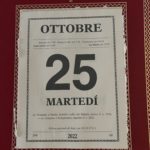 Roman sunrise was at 7:32 and Roman sunset will be at 18:16. The Ave Maria bell ought to ring at 18:30. There will be a partial eclipse of the sun at 10:59 UTC (9:59 Rome time) and the maximum in Rome 11:25 Rome time.
Roman sunrise was at 7:32 and Roman sunset will be at 18:16. The Ave Maria bell ought to ring at 18:30. There will be a partial eclipse of the sun at 10:59 UTC (9:59 Rome time) and the maximum in Rome 11:25 Rome time.
My maximum view today, slightly cloudy.

It is the Feast of Sts. Crispin and Crispinian, whose relics are at San Lorenzo in Panisperna about which I wrote recently in regard to Card. Sirleto.
Thank you, O Lord, for this day.
My offering to you all in this daily column today is about… columns.
This is the column at Santa Maria Maggiore set up by Paul V (Borghese +1621).
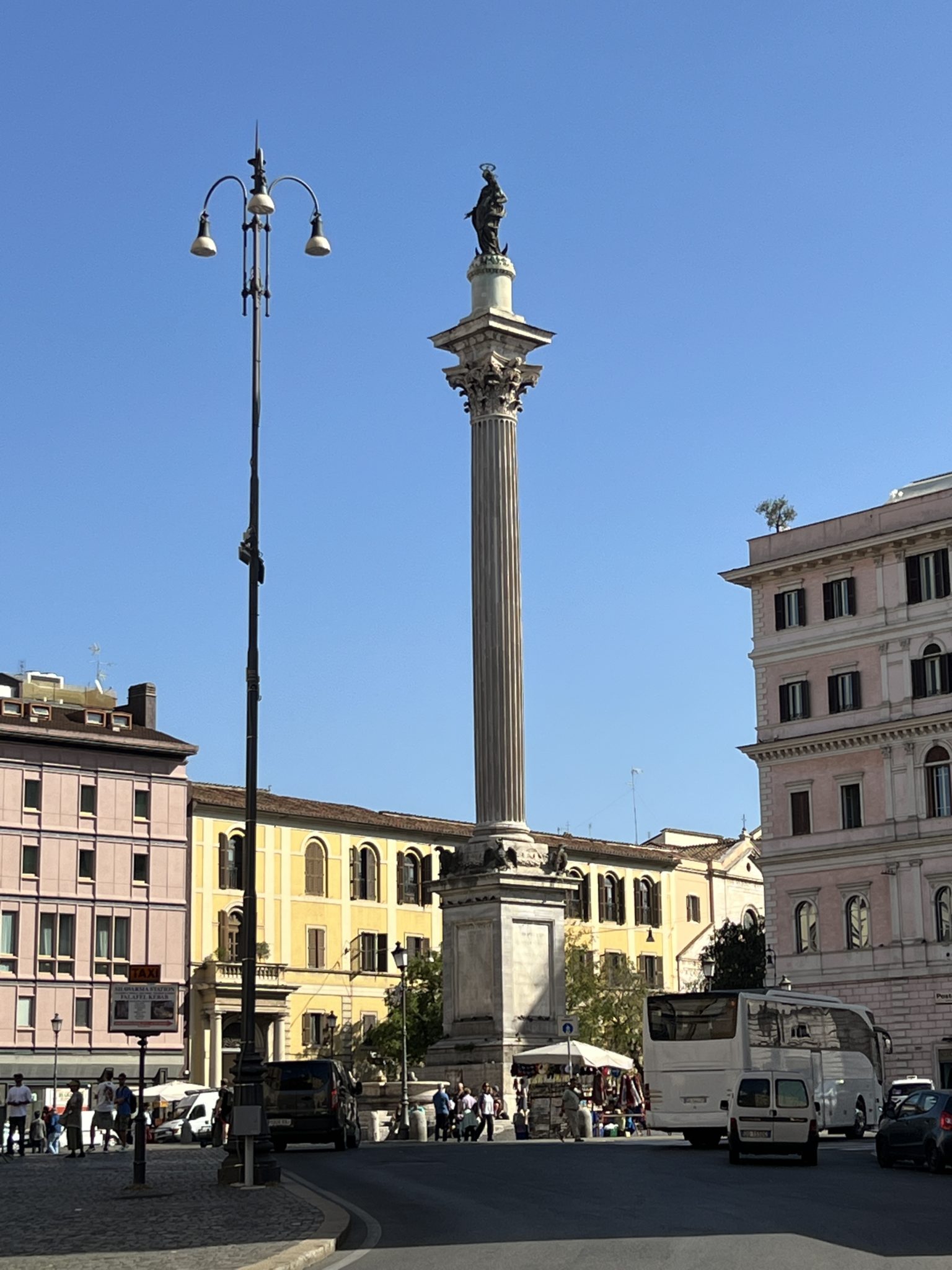
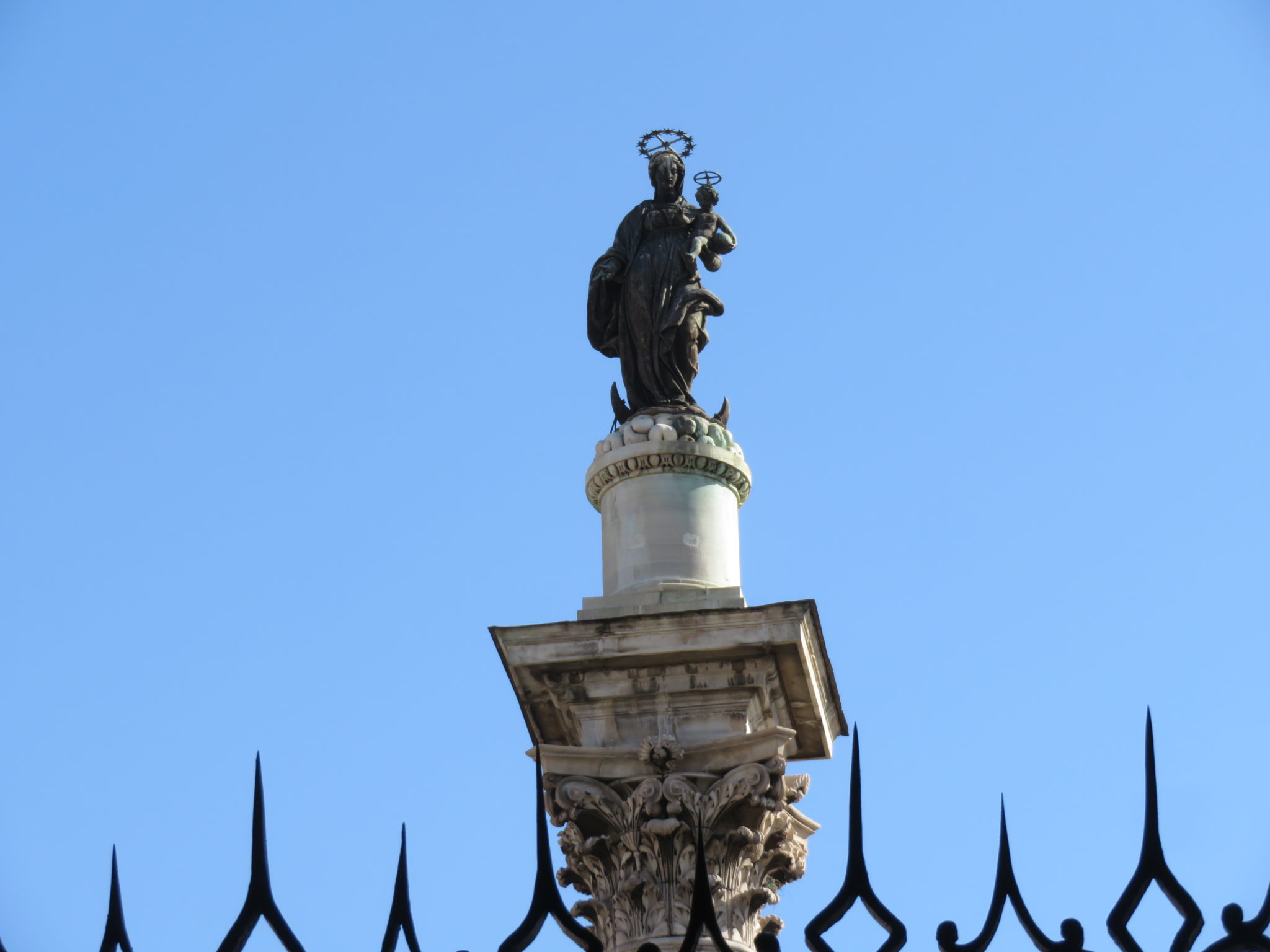
Sixtus V (+1590 Peretti) had remapped the city in a massive urban project of straightened streets and piazzas marked with obelisks and by christianizing the ancient columns of Marcus Aurelius and of Trajan. Sixtus’ goal was to present Rome as a city that was no longer pagan, but was sacred and dedicated to Christ.
Here is the obelisk at the apse of St. Mary Major, a starting point of one of the rays of the star configuration of streets to plazas that would be imitated in Paris and Washington DC.
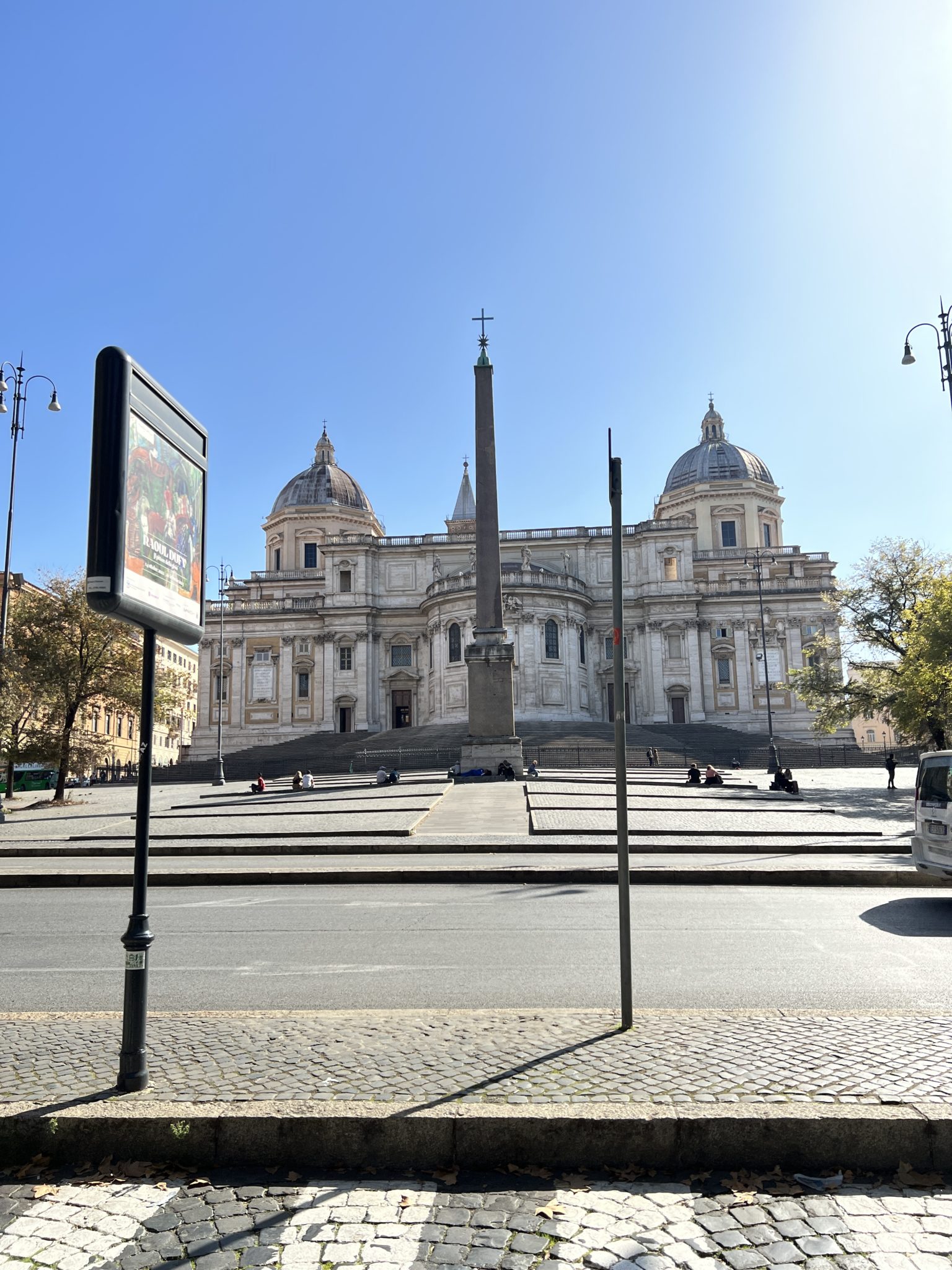
Staying in place and turning around you see all the way down a straight shot to Piazza del Popolo. The top of its obelisk is visible.
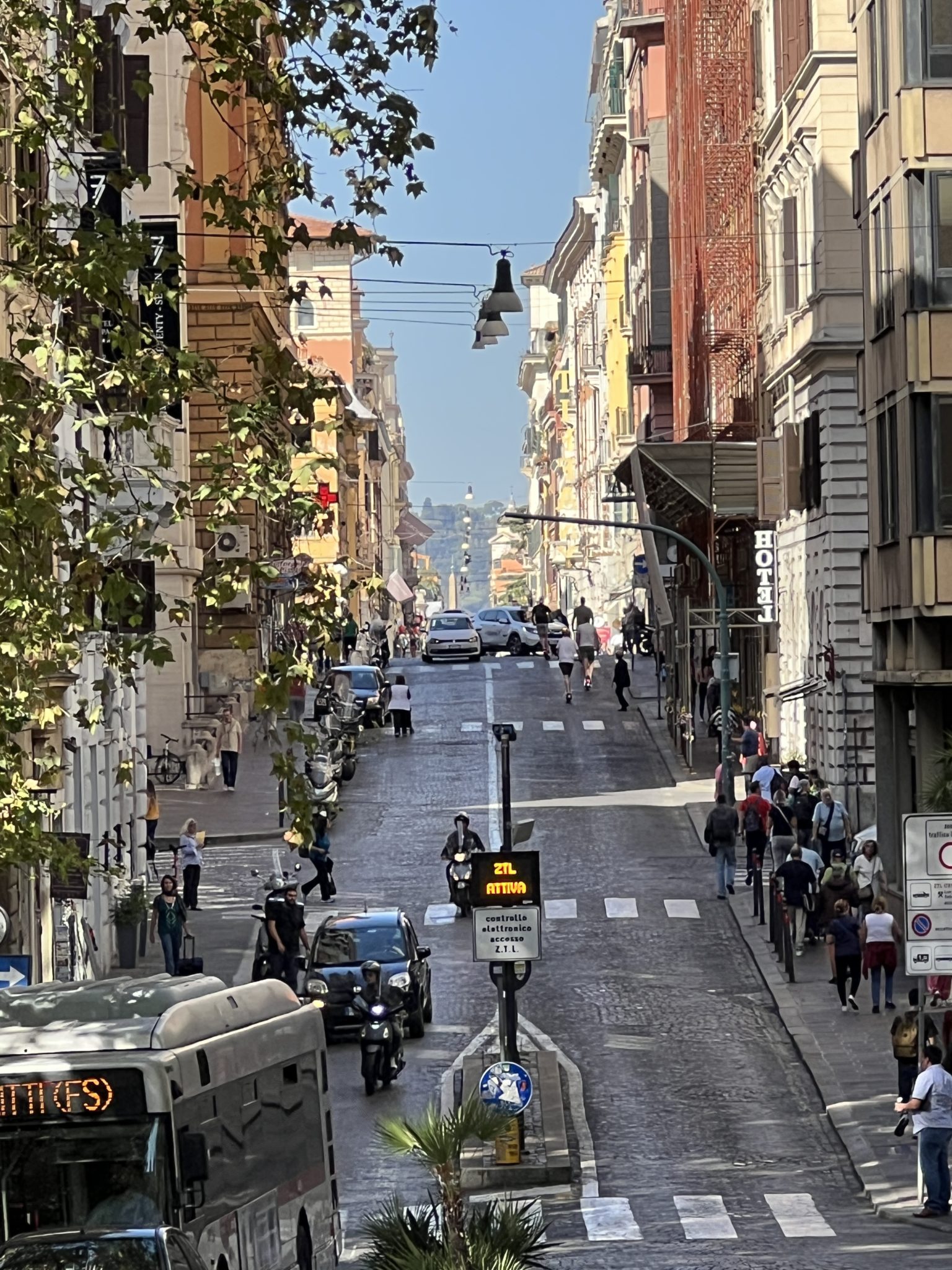
You might remember the trident of streets that spoked out from P.za del Popolo. On the left, the Via del Babuino, center Via del Corso, right Via della Ripetta.
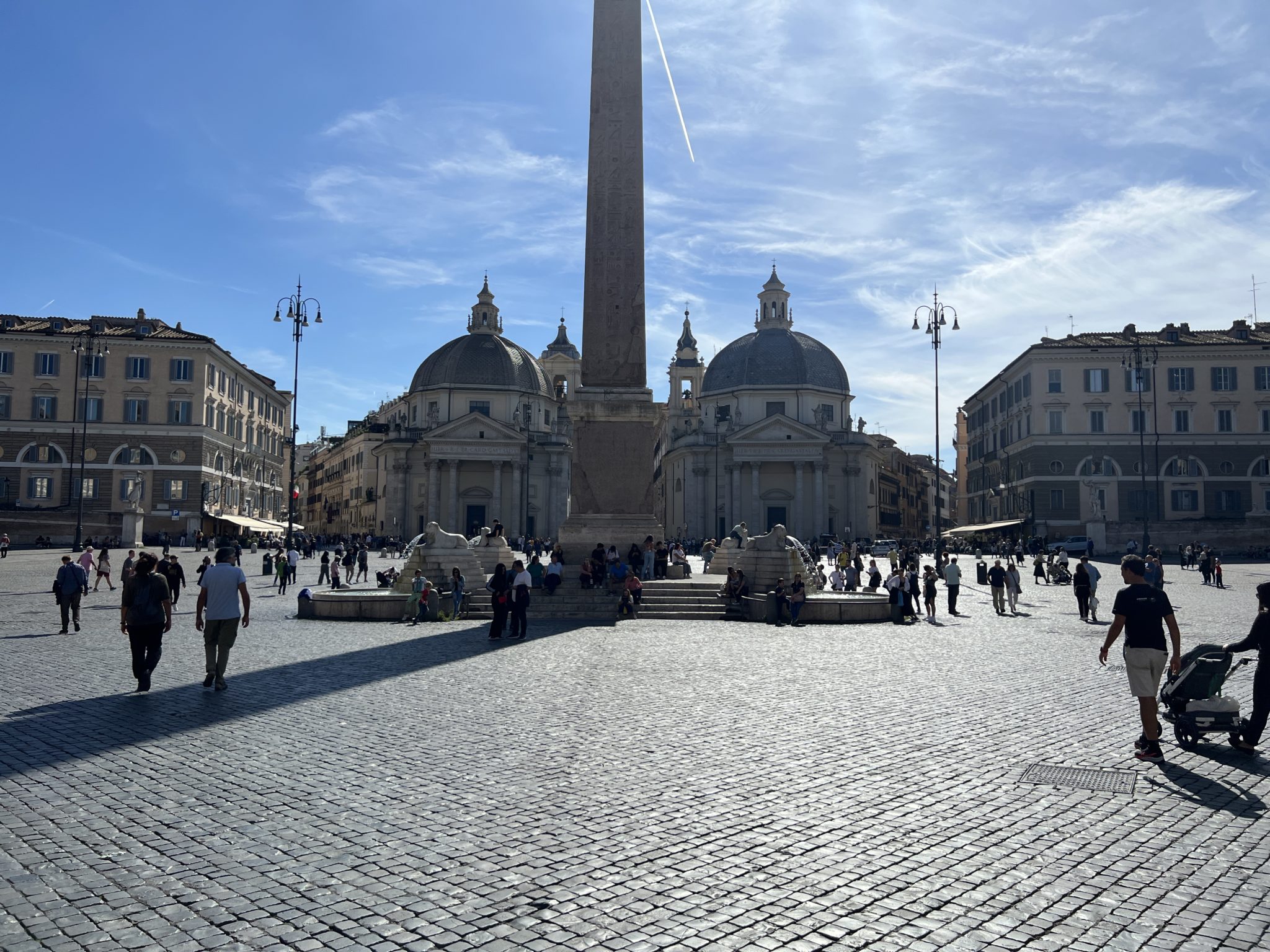
Paul V continued in this vein with the column of the Blessed Virgin at St. Mary Major.
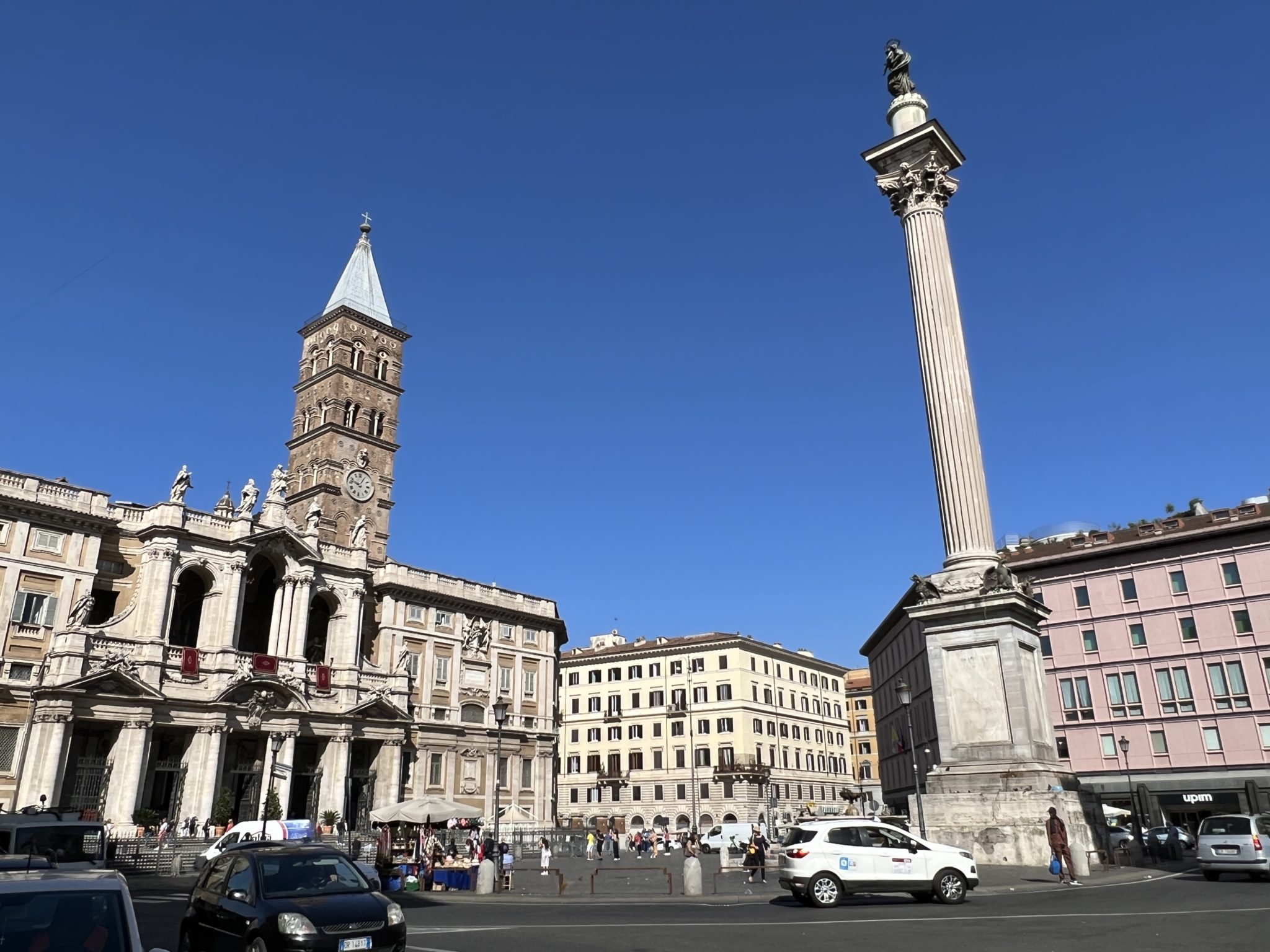
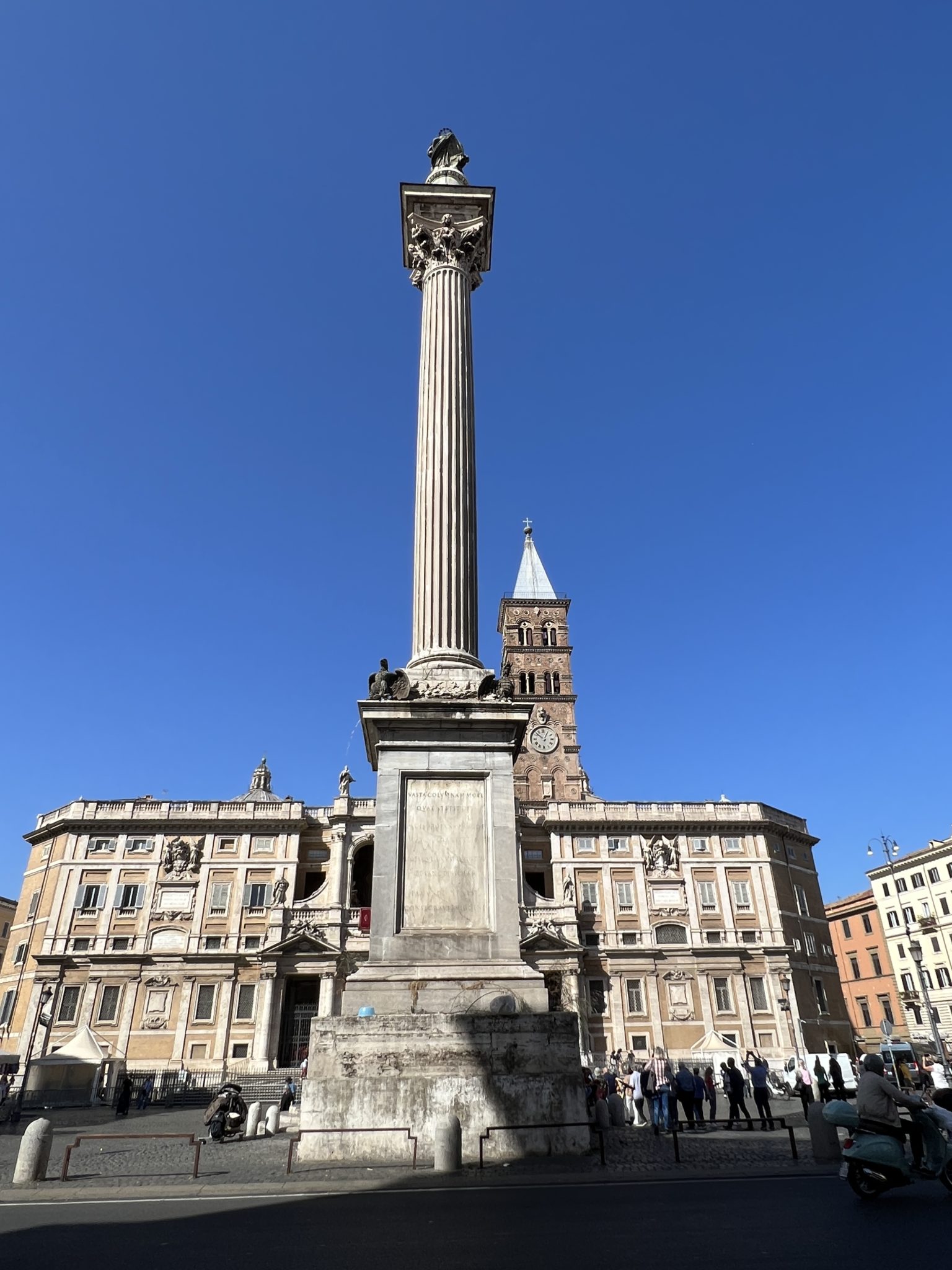
Sixtus had raised four obelisks, at important places, St. John Lateran, St. Mary Major, P.za del Popolo and St. Peter’s Square. The column of Trajan, set up in 113 after the campaign in Dacia with Trajan on the top as “divus… a god“, near the Forum was rededicated to St. Peter.
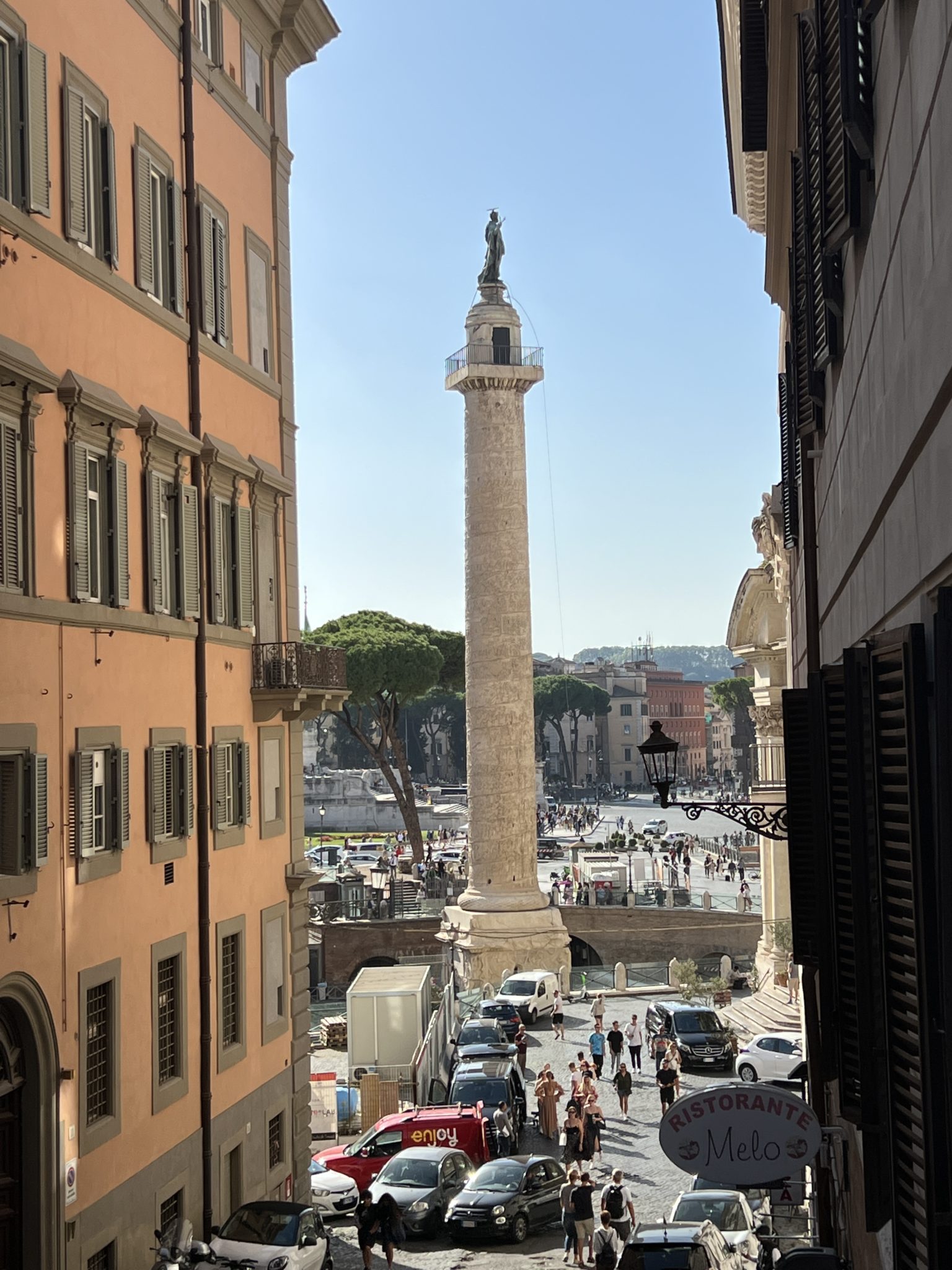
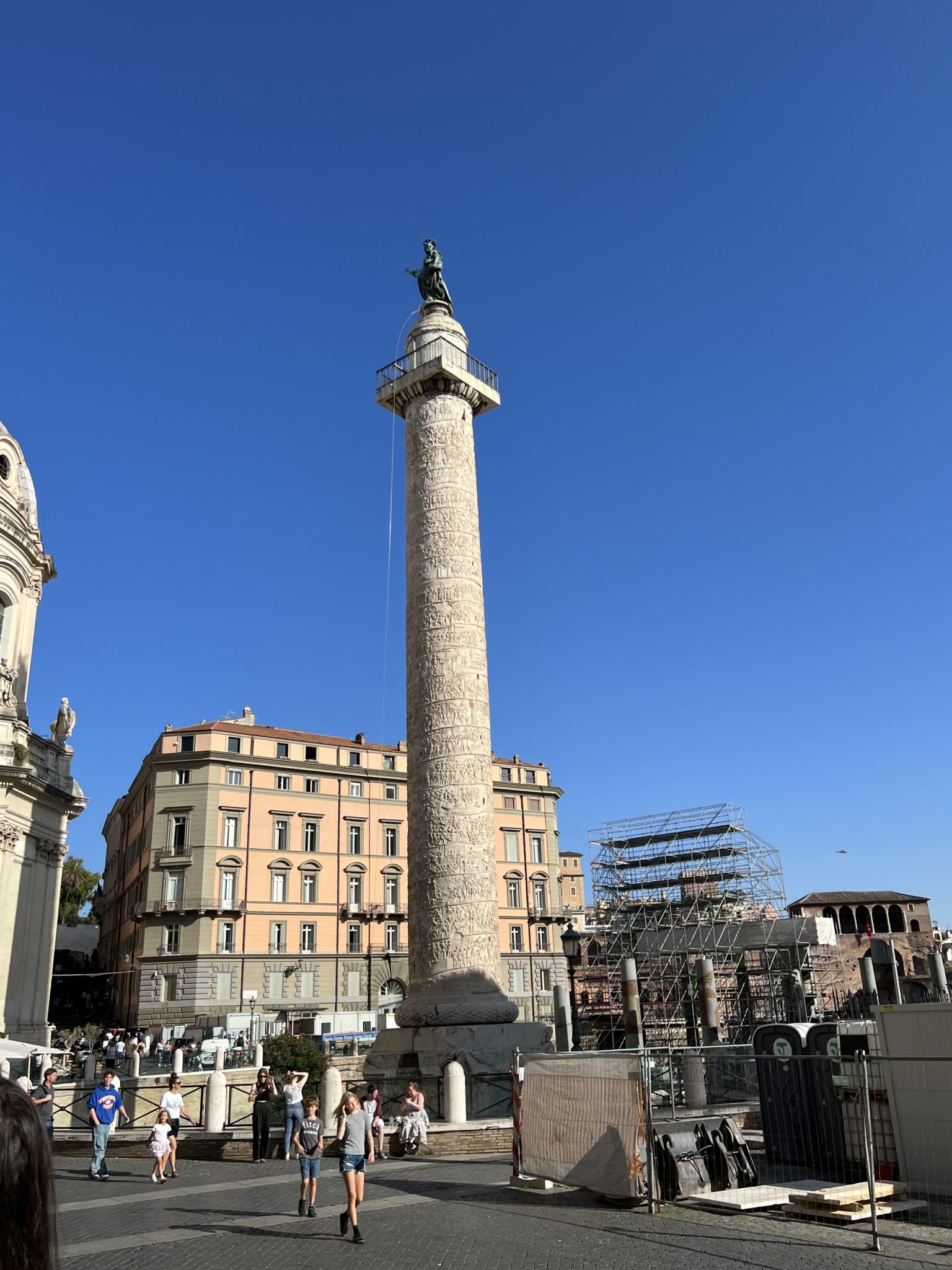
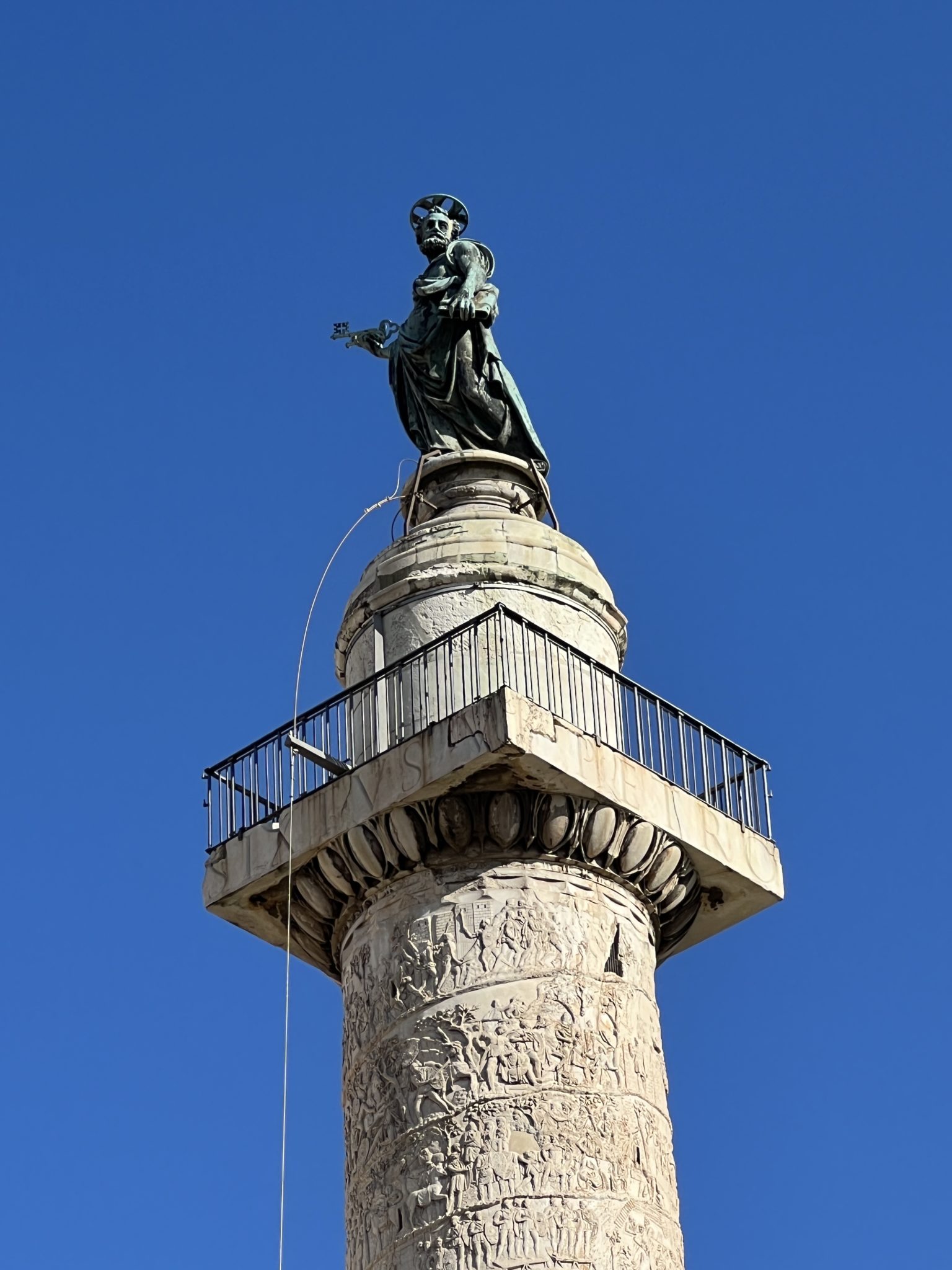
The column of Marcus Aurelius, set up in 180 by Commodus to mark the Danube campaign, was rededicated to St. Paul.
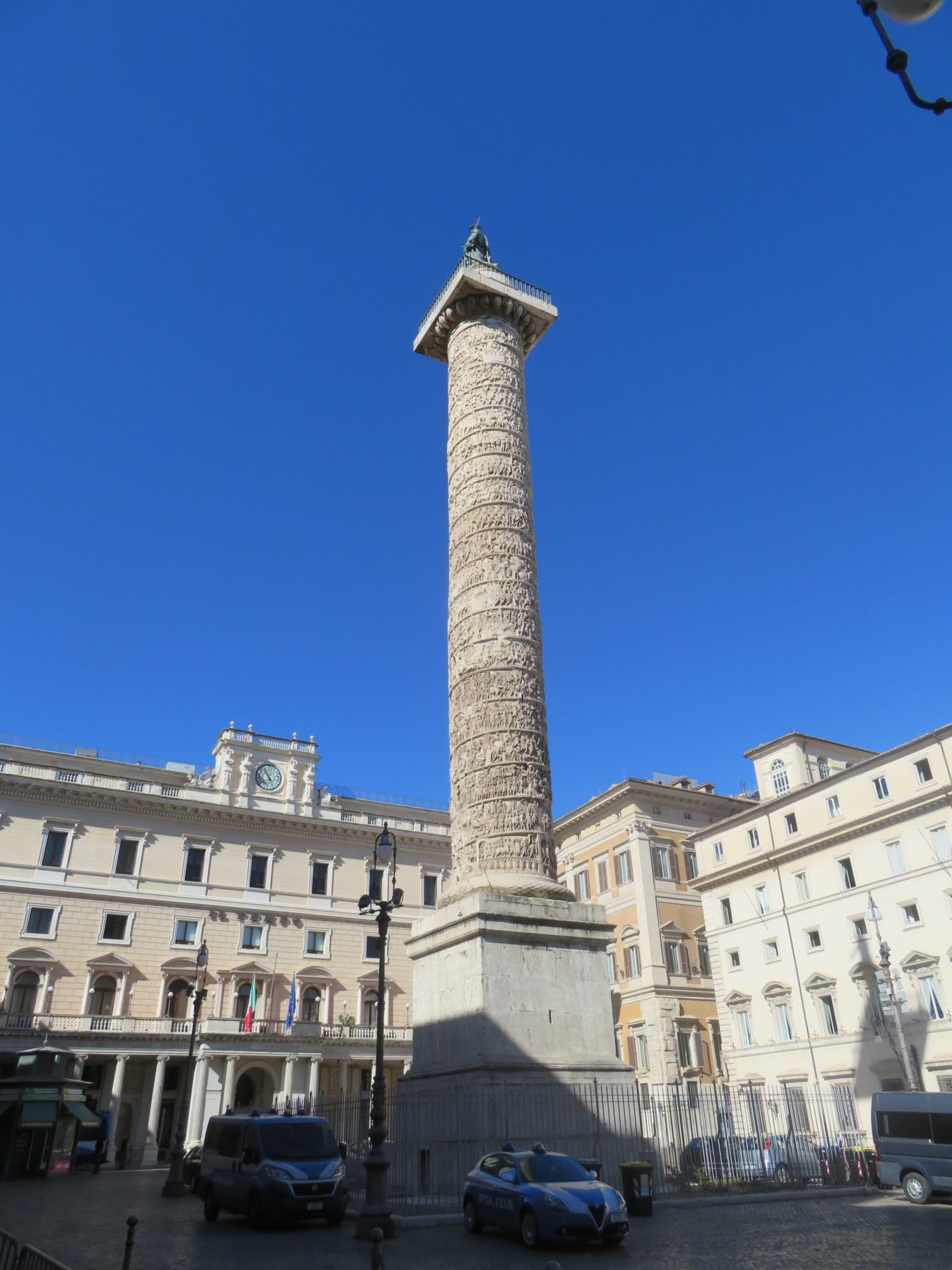
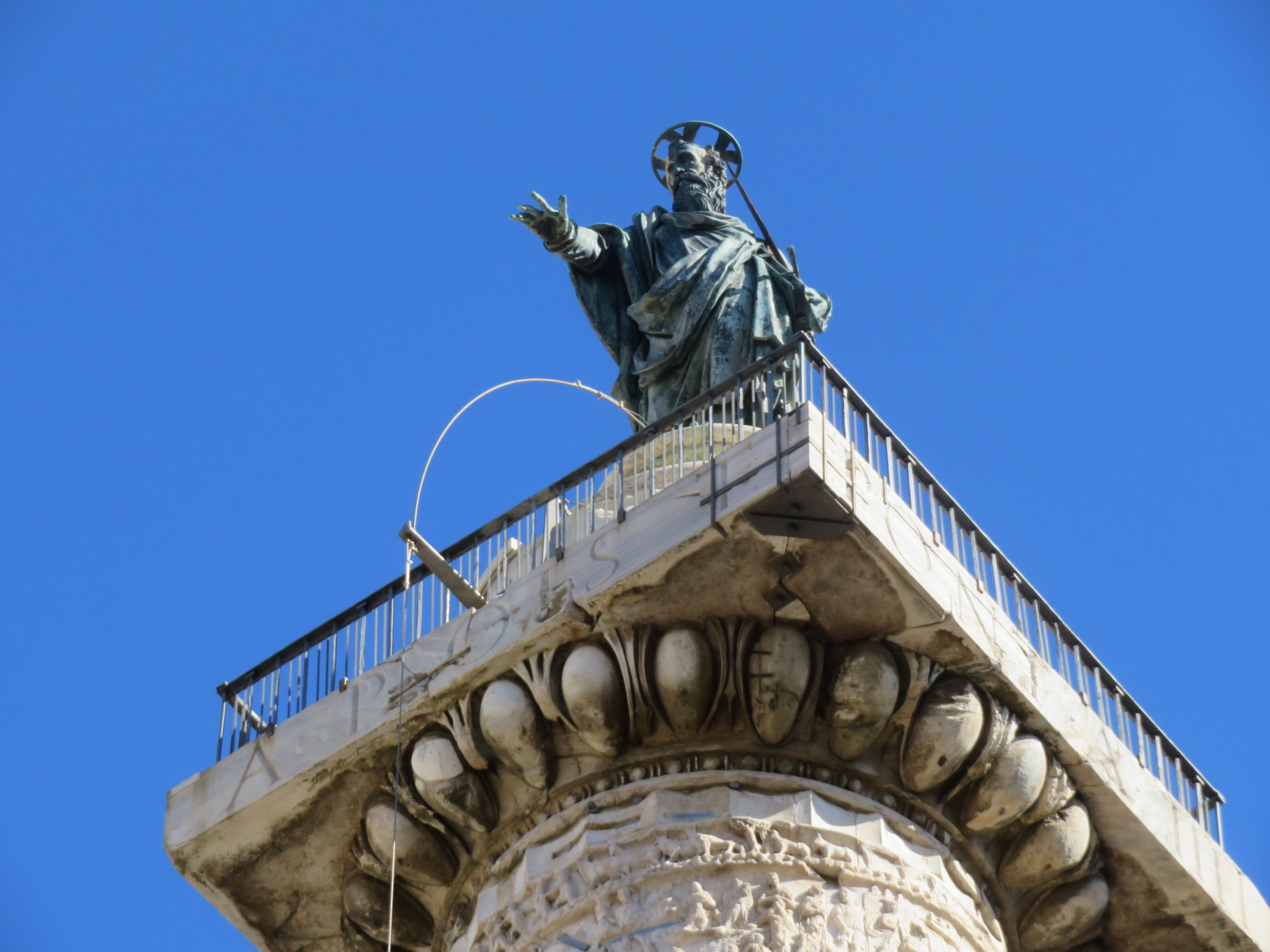
There were other pagan columns, such as the Column of Phocas in the Forum from 608.
Sixtus had planned to take the last surviving column of the Basilica of Maxentius and Constantine and set it up in front of Michelangelo’s Basilica Santa Maria degli Angeli in the old baths of Diocletian, now the Piazza della Repubblica. Sixtus had a great devotion to the Blessed Virgin which is why he arranged for the “Sistine Chapel” of St. Mary Major to be the place of his burial.
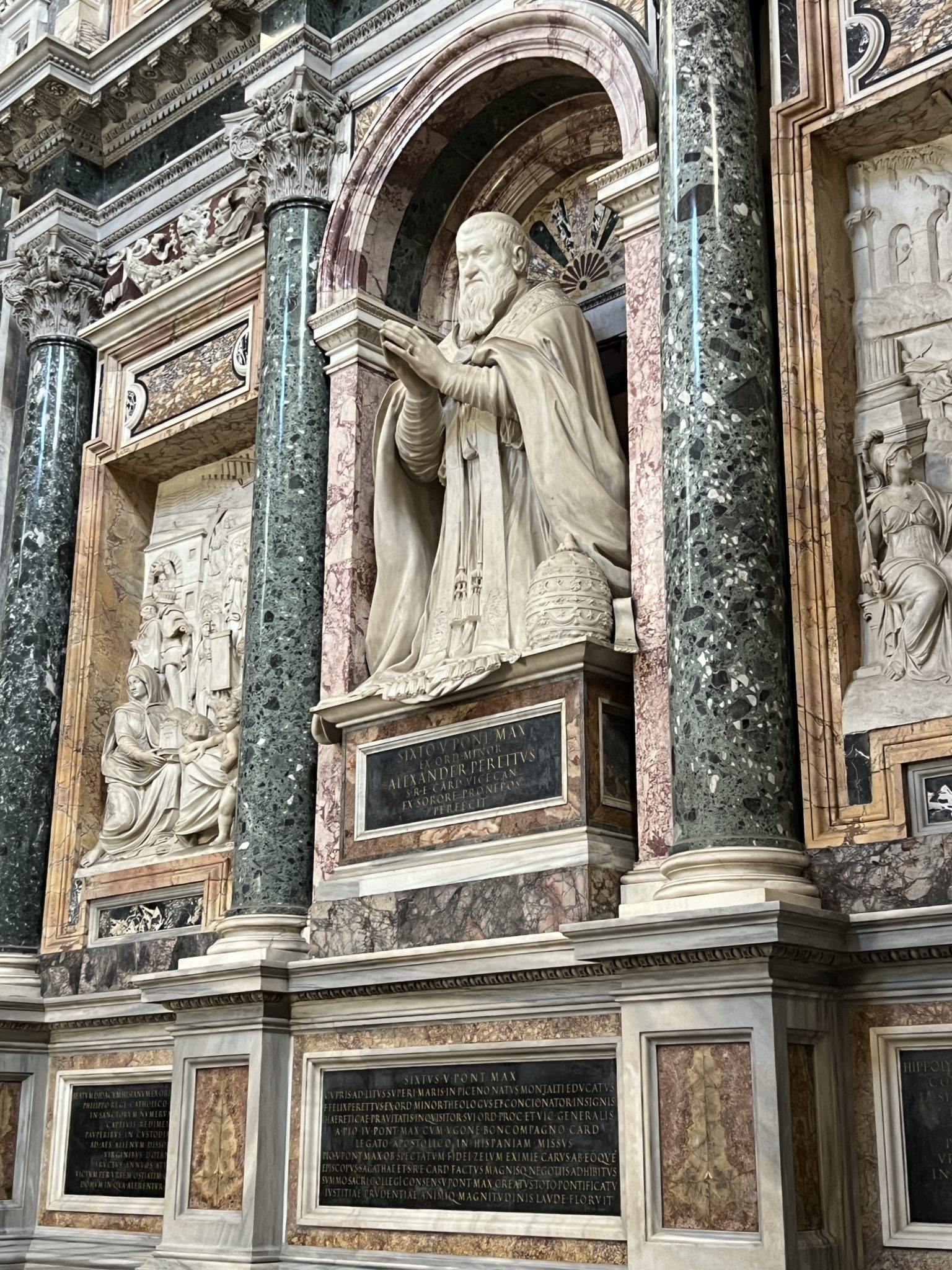
Sixtus didn’t get to carry out his project. Paul V took it up. St. Mary Major was dear to him because as a young priest he had served at the Basilica. He also wanted to be buried in the chapel across from the Sistine, the Pauline Chapel that has the famous image of S.M. del Popolo, the image of Mary most important to the Romans.
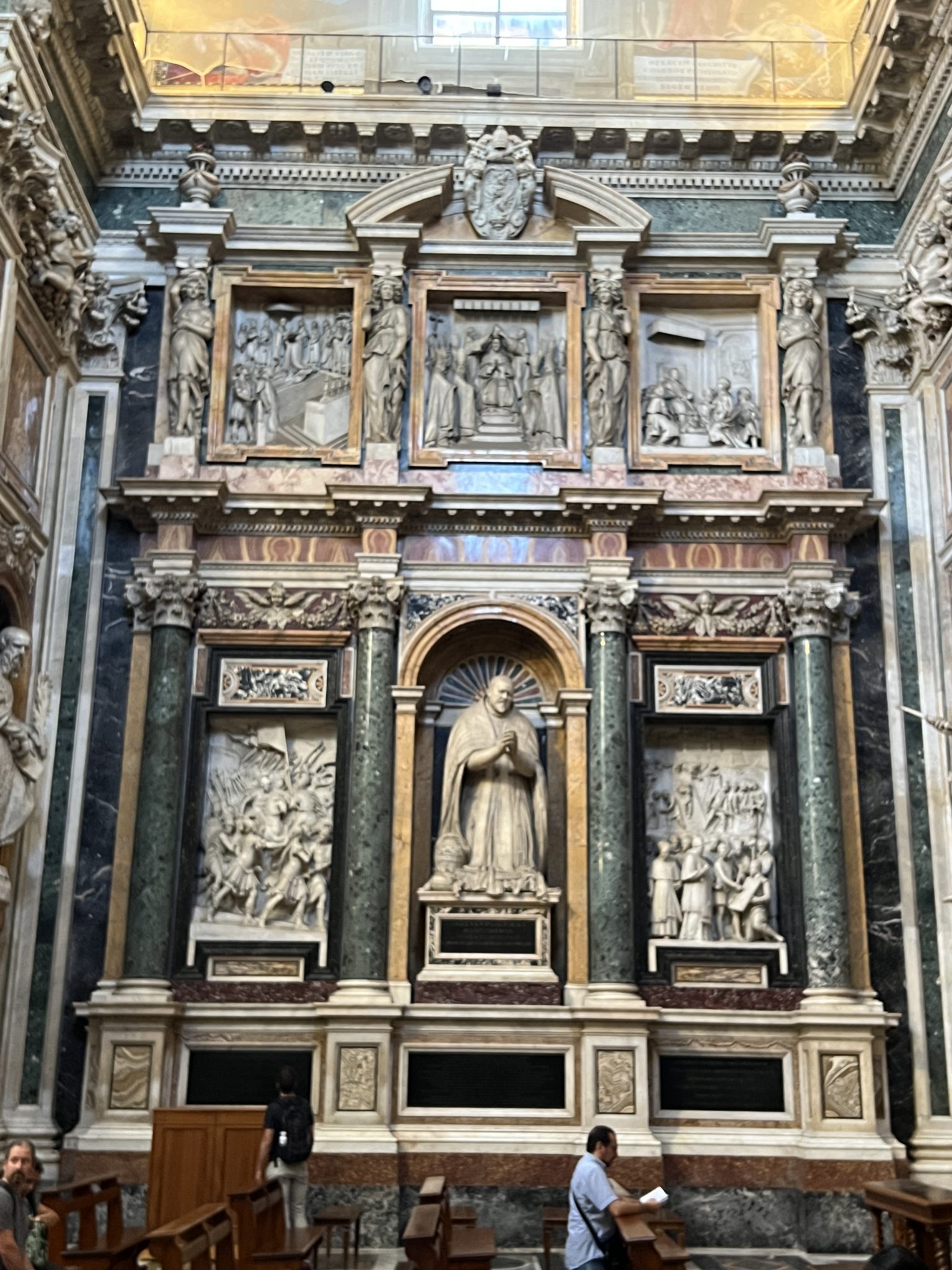 So, on 23 Oct 1613, after two months of planning, and the allocation of almost 11K scudi, they started to move the massive column to its new place. It was a huge project, on the scale of the moving and raising of the obelisks, requiring a casing for the column, and a wooden causeway to move it with 60 horses. It took them until April 1614 to move it 1.5km. Carlo Maderno (buried near Borromini at the Florentine church S. Giovanni) was in charge of the restoration of the capital and for the fountain fed by Acqua Felice that was to be at the base of the column. Meanwhile, a French sculptor Guillaume Berthelot prepared the 4 meter tall statue of the Blessed Virgin in gilded bronze. It was put in place 18 July 1614. The four inscription panels were installed in June. And the Borghese eagles and dragons from the family coat of arms soon followed. Paul V granted a perpetual indulgence of three years and 40 days to anyone who venerated the statue and prayed there on their knees.
So, on 23 Oct 1613, after two months of planning, and the allocation of almost 11K scudi, they started to move the massive column to its new place. It was a huge project, on the scale of the moving and raising of the obelisks, requiring a casing for the column, and a wooden causeway to move it with 60 horses. It took them until April 1614 to move it 1.5km. Carlo Maderno (buried near Borromini at the Florentine church S. Giovanni) was in charge of the restoration of the capital and for the fountain fed by Acqua Felice that was to be at the base of the column. Meanwhile, a French sculptor Guillaume Berthelot prepared the 4 meter tall statue of the Blessed Virgin in gilded bronze. It was put in place 18 July 1614. The four inscription panels were installed in June. And the Borghese eagles and dragons from the family coat of arms soon followed. Paul V granted a perpetual indulgence of three years and 40 days to anyone who venerated the statue and prayed there on their knees.
Sixtus had cleared the area behind the basilica and set out new streets. Paul continued the work in the front of the basilica and spoked streets out from it also, leading to the Suburra area, the Via Paolina, Via Urbana, the V. Gregoriana opened by Gregory XIII to St. John Lateran (now called Merulana), etc. These spoking streets were to showcase the 38 meter tall Marian column.
The opening of the area in front of the Basilica and the placement of a fountain for the good of the people in the area had been desired by the canons of the Basilica. That clearing was done with the help of “il Monsignore Presidente delle Strade” who is still commemorated around the city in the famous “no littering … no dumping” inscriptions, 67 surviving. One of them has its anniversary tomorrow. I should post it. It’s just up the street from where I write.
There were pagan columns with statues all around the ancient Empire. In the Christian era this practice was “baptized”, as it were, and pagan memorials were repurposed. They were religious and also political symbols. Think of the columns in Venice near San Marco or Trafalgar Square in London.
Paul V’s column had come from the Basilica of Maxentius which was considered to have been the Temple of Peace. There was a tradition that the temple caved in when Christ was born. Just as the column remained intact, so did the Virgin Mother of God. Once a pagan symbol, it was now a sign of the true Prince of Peace in the arms of the Virgin. The theme of peace is in the inscriptions.
VASTA COLUMNAM MOLE
QUAE STETIT DIV
PACIS PROFANA IN AEDE
PAULUS TRANSTULIT
IN EXQUILINUM QUINTUS
ET SANCTISSIMAE
PAX UNDE VERA EST
CONSECRAVIT VIRGINI
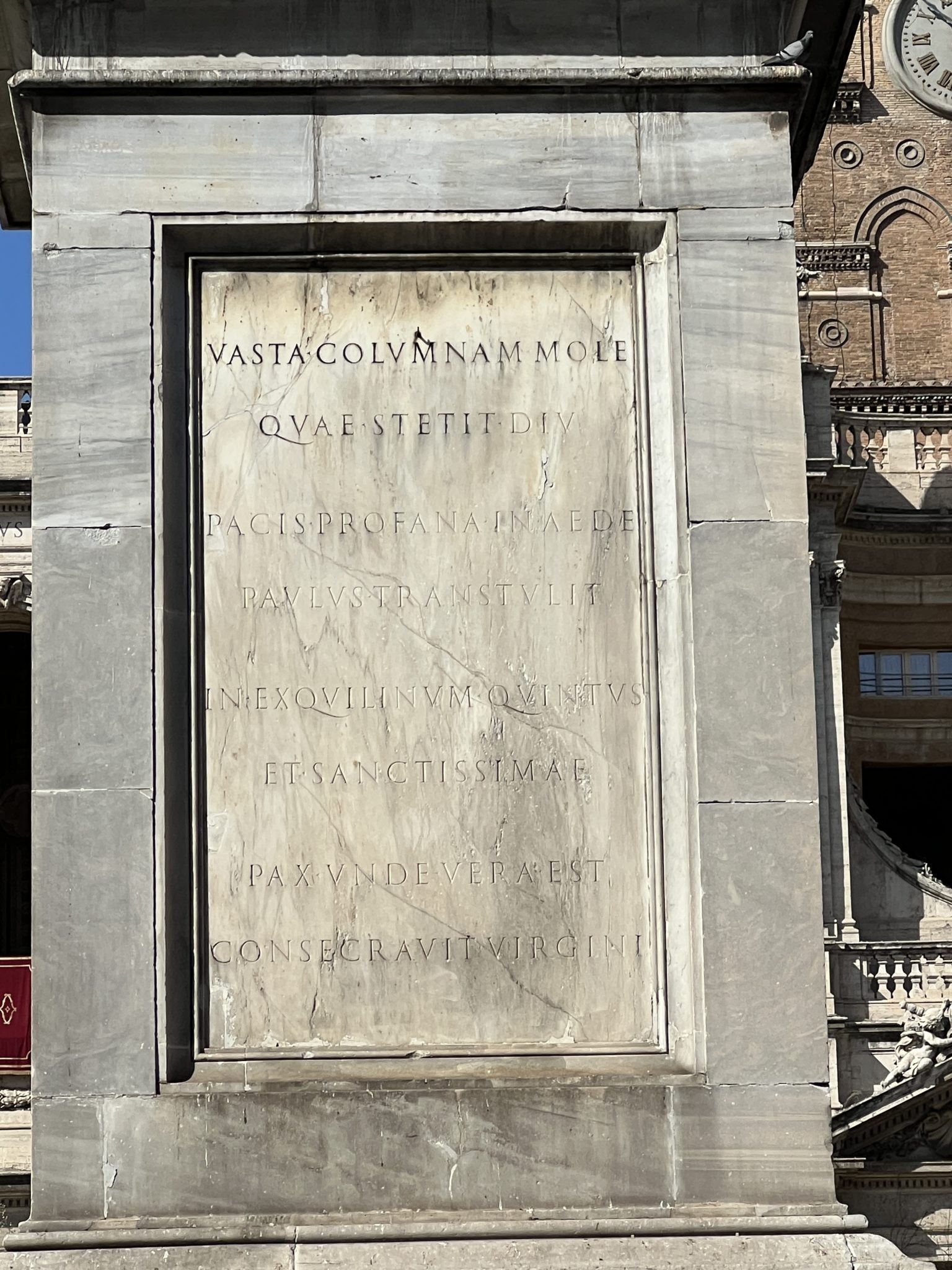
Perhaps another day we can get into the connection of columns or pillars, in Scripture and in literature, another day.
White to move and win material. Pretty straight forward… especially after yesterday. I posted more about that one. Solution.
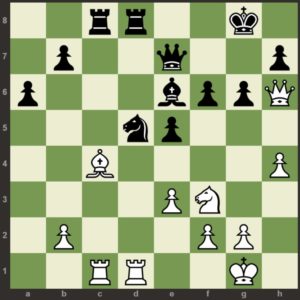
Remote Chess Academy has a beginner pack. If you see something at that site that you want, let me know and I can create a specific link to it.
Please remember me when shopping online. Thanks in advance. US HERE – UK HERE These links take you to a generic “catholic” search in Amazon, but, once in and browsing or searching, Amazon remembers that you used my link and I get the credit.


































Google has preserved, by scan, a copy of the Ordo Dedicationis of the obelisk at St. Mary Major. It’s a short pamphlet including a history of the obelisk, a sketch, and the Rite of Excorcism used. And, like almost all books of this time period, it’s prefaced with a number of lovely dedication poems.
https://books.google.com/books/about/Ordo_dedicationis_obelisci_quem_Sixtus_V.html?id=xFBTAAAAcAAJ#v=onepage&q=sixtus%20v%20pont%20max
We really need to get back to publishing books prefaced by dedication poems.
“Aenea serpentis Moses simulacra sacerdos
Extulit aegrotis ut medicina foret
Nunc alter Moses obelisci in vertice Sixtus
Eregit aegrotis aenea signa Crucis
Vos O Romani sustollite ad aethera vultus
A cruce nam vobis vestra petenda salus”
I recall reading a passage in a book about renaissance era preachers, that the big difference between Catholic and Protestant preaching was, that, while the Protestants used copious amounts of Scripture, it was in a very mechanical way; whereas, the Catholics had such a familiarity with the text of scripture that their references flowed forth into the sermon almost imperceptibly: it had inescapably infused their thought. It certainly reads like that, anyways. Something else to get back to.
In addition to loving these pictures themselves, (especially St. Mary Major), I love the orientation you provided with the group.
I have had the pleasure of getting to Rome only once, but I dearly hope to return again, before I am too old to enjoy it.
for the daily puzzle i like 1. Bxd5 Bxd5 2. Rxc8 Rxc8 3. Rxd5.. if 1. Bxd5 Rxd5 2. Rxd8 Bxd8 3. Rxd5
1.Bxd5 wins
If 1…Rxc1 then 2.Bxe6+ Qxe6 3.Rxc1 and white is up a knight.
If 1…Bxd5 then 2.Rxc8 Rxc8 3.Rxd5 and white is again up a knight
If 1…Rxd5 then 2.Rxc8+ Bxc8 (blocking with 2…Rd8 is much worse) 3.Rxd5 and white is up a rook
As today is St. Crispin’s Day…
https://www.youtube.com/watch?v=qk_rPHoSc8w
It was Pope St. Pius V that saved the pagan obelisk and took them over. He also preserved a lot of Pagan artwork in a separate museum for their beauty as art.
[Pius V… no.
Pius VI set up the o. at the Spanish Steps, Montecitorio and Quirinale
Pius VII put one up in the Pincio Gardens.
Clement XI at the Pantheon
Alexander VII on the Elephant
Sixtus V did S.M. Major, Lateran, Vatican, Flaminian]
This caught my eye immediately, but it needed time to put together:
“The column of Trajan, set up in 113 after the campaign in Dacia with Trajan on the top as “divus… a god“, near the Forum was rededicated to St. Peter.”
Not only did we repurpose their columns, we repurposed their adjective, too. “Divus” was later used as a poetic alternative to “sanctus.” (Some of the more puritanical protestants used this as an accusation of our popish idolatry. Being a convert myselfit also caught me off-gaurd when I first encountered it) The oldest reference to this practice I could find is in the “Phsychomachia” of the late 4th century poet Prudentius:
mortali de matre hominem, sed cum patre numen.
inde omnis iam diua caro est quae concipit illum
naturamque dei consortis foedere sumit.
“Diva caro” refers to the flesh of our Blessed Mother. The subject of “sumit” is our Lord.
[Outstanding. Soon I’ll have to make your own star.]
Thank you for the correction Father. I will have to right this down. I still haven’t conquered Paste yet on the computer.
Pingback: Canon212 Update: The Church of Mature, Deep Thinking, Synod-Happy Perverts and Killers – The Stumbling Block
1. Bxd5 Rxc1
2. Bxe6+ Qxe6
3. Rxc1
Thank you, this column on columns is very interesting.